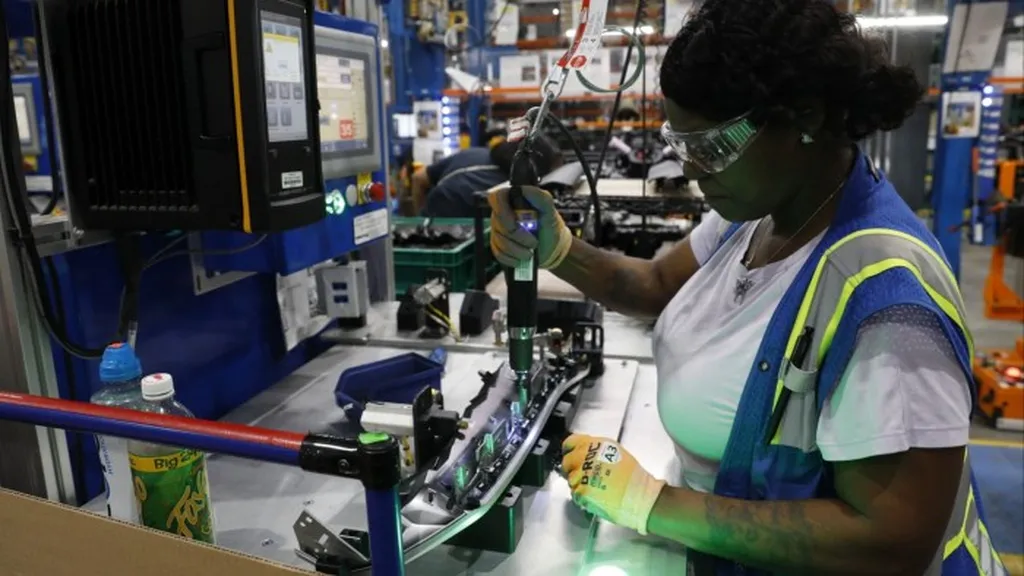The U.S. labor market continues to defy expectations, with recent data underscoring its resilience despite macroeconomic headwinds. The latest U.S. Initial Jobless Claims report—showing claims at 218,000, below the 224,000 forecast—reveals a labor market that, while not without friction, remains robust enough to support cyclical industries like construction and engineering. This data, coupled with sector-specific trends, paints a compelling picture for investors seeking exposure to growth drivers in infrastructure, energy, and technology.
Labor Market Signals and Cyclical Momentum
The marginal rise in jobless claims to 218,000, though above the pandemic-era low of 217,000, remains well within historical norms. More importantly, the four-week moving average of 224,500 claims has declined steadily, signaling a labor market that is not only holding its ground but adapting to structural shifts. The Federal Reserve’s decision to keep rates in the 4.25%-4.50% range reflects a cautious stance, acknowledging downside risks but also recognizing the persistent demand for labor in key sectors. For cyclical industries like construction and engineering, this stability is critical. The sector’s ability to attract and retain workers—despite a 1.06-to-1 job openings-to-unemployment ratio—highlights its competitive positioning. With 382,000 monthly job openings in construction alone, the industry is outpacing supply, creating a virtuous cycle of demand and wage growth. This dynamic is particularly pronounced in high-skill roles tied to energy transition and digital infrastructure, where labor shortages are acute.
Sector-Specific Growth Drivers
The construction and engineering sectors are uniquely positioned to benefit from a confluence of factors:
1. **Policy-Driven Demand**: The Infrastructure Investment and Jobs Act (IIJA), Inflation Reduction Act (IRA), and CHIPS and Science Act are fueling multi-year spending on manufacturing, energy, and infrastructure. For example, the IRA’s tax incentives for clean energy projects are expected to generate over $1 trillion in private investment through 2030, directly boosting demand for construction labor and engineering expertise.
2. **Technological Transformation**: Adoption of building information modeling (BIM), digital twins, and robotics is redefining project efficiency and safety. These tools are not only mitigating labor shortages but also enhancing margins for firms that invest in them.
3. **Demographic Shifts**: An aging workforce and evolving worker preferences are pushing the industry to prioritize automation and reskilling. By 2030, 46% of craft workers will be over 40, creating a critical need for technology-driven solutions and cross-sector talent pipelines.
Strategic Investment Opportunities
Investors can capitalize on this momentum by targeting three subsectors:
1. **Renewable Energy Infrastructure**: Wind turbine service technicians and solar photovoltaic installers are projected to grow by 56.3% and 26.4%, respectively, through 2033. Firms like NextEra Energy (NEE) and Brookfield Renewable Partners (BEP) are poised to benefit from this transition.
2. **Construction Technology**: Companies specializing in automation, BIM, and digital project management—such as Autodesk (ADSK) and Trimble (TRMB)—are addressing the industry’s productivity challenges while capturing margin expansion.
3. **Labor-Saving Innovation**: Robotics firms like Boston Dynamics and ABB (ABB) are developing solutions for repetitive tasks, reducing reliance on scarce human labor and improving project economics.
Positioning for the Fed’s Rate Path
The Federal Reserve’s anticipated 50-basis-point rate cut in September 2024 adds another layer of optimism. Lower borrowing costs will reduce project financing hurdles for developers and municipalities, accelerating pipeline execution. Historically, construction stocks have outperformed during easing cycles, as seen in the 1990s and 2010s. Investors should monitor the M2 Money Supply and 10-Year Treasury Yield to gauge liquidity trends that could further catalyze the sector.
Building for the Future
The U.S. construction and engineering sectors are at an inflection point. A strong labor market, underpinned by below-forecast jobless claims, signals sustained demand for cyclical industries. Meanwhile, policy tailwinds and technological innovation are creating a durable growth story. For investors, the key is to align with firms that are not only weathering the current labor crunch but actively reshaping the industry’s future. As the economy navigates a delicate balance between inflation control and growth, construction and engineering offer a compelling case for long-term strategic positioning.

